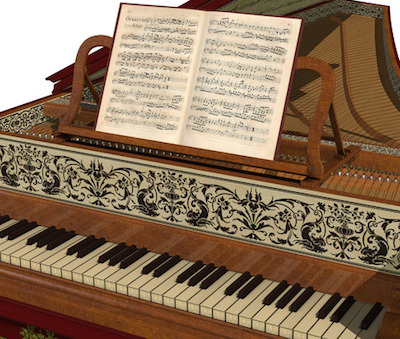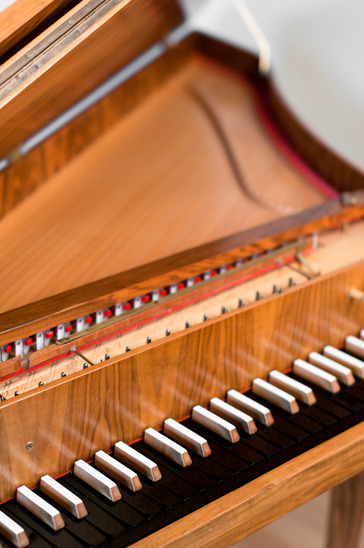Have you ever looked at the history of a piano? You’ll find a variety of keyboard instruments listed throughout time. But are they all related to the piano?
The harpsichord was a very popular instrument in the 18th century. While a piano uses hammers and dampers to strike the strings and create a sound, a harpsichord performs the function differently. When the keys on a harpsichord are depressed, the strings are plucked rather than struck. Therefore the sound produced will be different than what you hear from a piano.
Today, if you purchase a spinet piano, you are purchasing a small harpsichord. Spinets have only one string per note. Because they are smaller, they will have less volume, less harmonics, less sound than a more traditional harpsichord or its piano counterpart.
With the popularity of the harpsichord in the 1700s, changes quickly followed in an attempt to make them even better. According to the Metropolitan Museum of Art, the pianoforte was invented in the early 1700s by artist Bartolomeo Cristofori. He was charged with caring for the harpsichords belonging to the Florentine court of Grand Prince Ferdinando de Medici. While maintaining them and attempting to make them better, he designed a harpsichord with loud and soft capabilities, which eventually came to be known as a pianoforte.
This invention mirrored today’s pianos, a harpsichord with hammers and dampers, two keyboards and a four range octave. They were highly complex instruments that were also very expensive to produce. Over time, pianofortes were reinvented, reincorporated, and redesigned, eventually becoming what we today call the piano.
You will sometimes find pianofortes also described as an antique. In reality, not many pianofortes survive.
Today’s pianos provide a rich sound quality that we’ve come to know and love. Are we still reinventing and redesigning? Yes, all the time. We’re moving into the digital world. Many are relying equally on acoustic and digital pianos to create the desired sounds.
Stop by today to see our entire line of acoustic and digital pianos.




